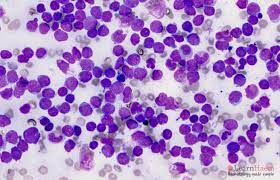What is Acute Pancreatitis
Acute pancreatitis is
a medical condition in which the pancreas, a gland located behind the stomach,
becomes inflamed. The pancreas plays an important role in digestion, producing
enzymes that help break down food, as well as hormones that regulate blood
sugar.
Acute pancreatitis can range from a mild, self-limited
illness to a severe, life-threatening condition. The most common causes of
acute pancreatitis include gallstones, alcohol consumption, high levels of
triglycerides in the blood, certain medications, infections, and trauma to the
pancreas.
Symptoms of acute pancreatitis can include
severe abdominal pain that may radiate to the back, nausea and vomiting, fever,
and rapid heartbeat. In severe cases, acute pancreatitis can lead to
complications such as pancreatic necrosis, pseudocysts, and organ failure.
Treatment for acute pancreatitis typically
involves hospitalization, supportive care, and addressing the underlying cause.
In mild cases, patients may be able to recover with conservative measures such
as fasting, pain management, and intravenous fluids. In severe cases, surgery
or other interventions may be necessary.
Who is affected by acute pancreatitis
Acute
pancreatitis can affect people of all ages and genders, although it is more
common in adults. It is estimated that acute pancreatitis affects about 50,000
to 80,000 people in the United States each year.
There are
several factors that can increase the risk of developing acute pancreatitis,
including:
1. Gallstones: The most common
cause of acute pancreatitis, gallstones can block the pancreatic duct and
trigger inflammation.
2. Alcohol
consumption: Heavy alcohol consumption can cause damage to the pancreas and
increase the risk of acute pancreatitis.
3. High
levels of triglycerides in the blood: High levels of triglycerides, a type of fat, can cause inflammation
in the pancreas.
4. Certain
medications: Certain medications, such as corticosteroids and tetracycline
antibiotics, can increase the risk of acute pancreatitis.
5. Infections: Viral or bacterial
infections can cause inflammation in the pancreas.
6. Genetic
factors:
Certain genetic mutations have been linked to an increased risk of developing
acute pancreatitis.
7. Other
medical conditions: Medical conditions such as cystic fibrosis,
hyperparathyroidism, and autoimmune diseases can increase the risk of acute
pancreatitis.
How it's treated
affected by acute pancreatitis :
The treatment for acute pancreatitis depends on the severity of
the condition and the underlying cause. In general, treatment for acute
pancreatitis may include the following:
1. Hospitalization: Most cases of acute
pancreatitis require hospitalization. This allows for close monitoring of the
patient's condition and the administration of intravenous fluids and
medications.
2. Fasting: To give the pancreas
time to heal, patients with acute pancreatitis may need to refrain from eating
or drinking for a period of time. In some cases, a feeding tube may be
necessary to provide nutrition.
3. Pain
management: Acute pancreatitis can cause severe abdominal pain, which may
be managed with pain medications.
4. Addressing
the underlying cause: If gallstones or another underlying condition is causing acute
pancreatitis, treatment will focus on addressing that issue.
5. Management
of complications: If complications such as infections or fluid collections develop,
additional treatment may be necessary.
6. Surgery: In rare cases,
surgery may be necessary to remove damaged tissue or repair damage to the
pancreas.
In addition to medical treatment, lifestyle changes such as
abstaining from alcohol, maintaining a healthy weight, and managing high
triglyceride levels can help prevent future episodes of acute pancreatitis.
Complications
Acute pancreatitis can lead to several complications,
particularly if the condition is severe or not treated promptly. Some possible
complications of acute pancreatitis include:
1. Pancreatic necrosis: This occurs when pancreatic tissue dies due to lack of blood flow. It can lead to infection, abscess formation, and sepsis.
2. Pseudocysts: Pseudocysts are fluid-filled sacs that can form in or around the pancreas. They can become infected or rupture, leading to bleeding or shock.
3. Pancreatic abscess: This is a collection of pus within the pancreas or surrounding tissue. It can be a complication of pancreatic necrosis or pseudocysts.
4. Organ failure: Acute pancreatitis can lead to failure of other organs such as the kidneys, lungs, or heart.
5. Diabetes: Damage to the pancreas can cause a decrease in insulin production, leading to high blood sugar levels and the development of diabetes.
6. Malnutrition: Acute pancreatitis can interfere with the absorption of nutrients, leading to malnutrition.
7. Recurrent episodes of acute pancreatitis: If the underlying cause of acute pancreatitis is not addressed, it can lead to recurrent episodes of the condition.
It is important to seek medical attention promptly if you
experience symptoms of acute pancreatitis, as early diagnosis and treatment can
help prevent complications.























